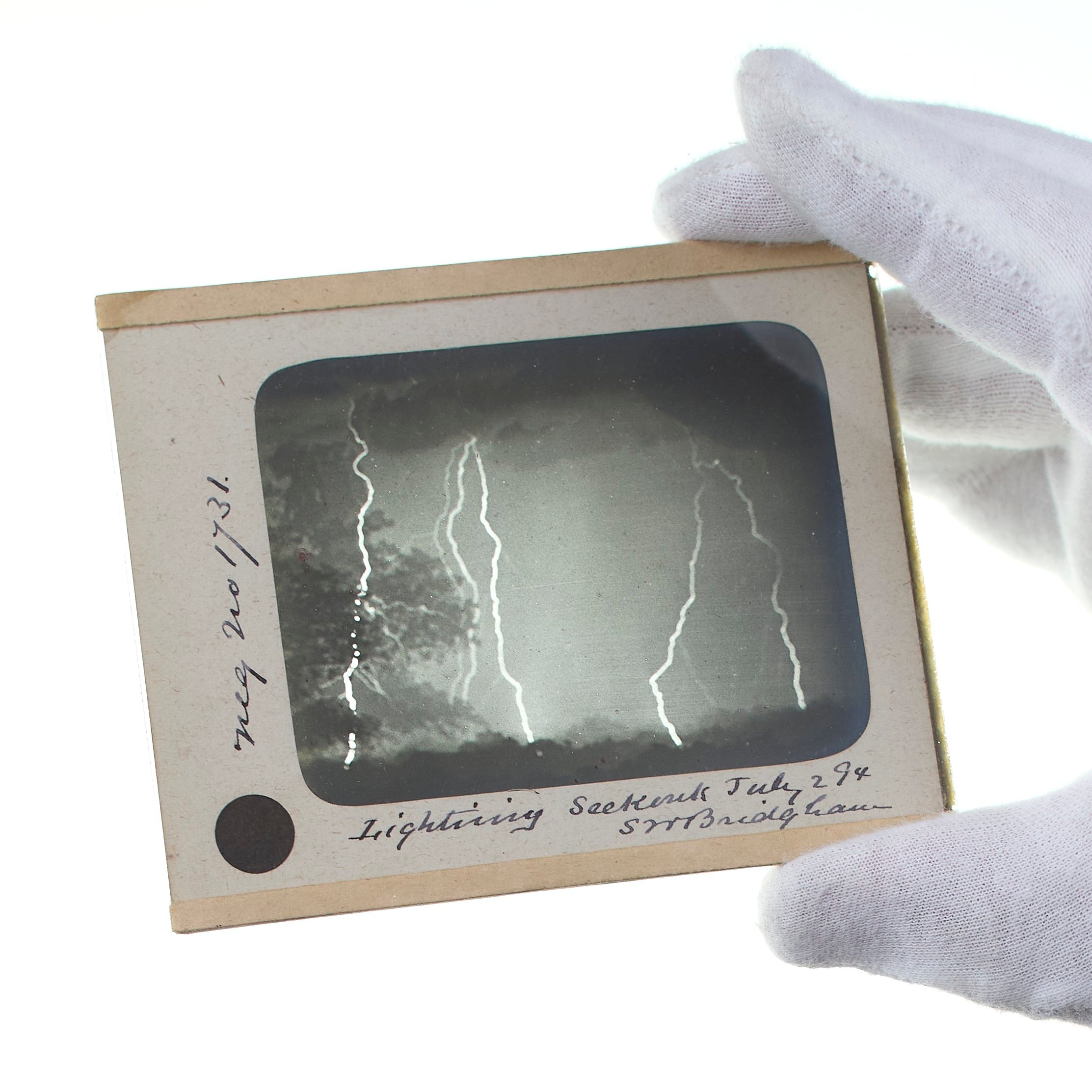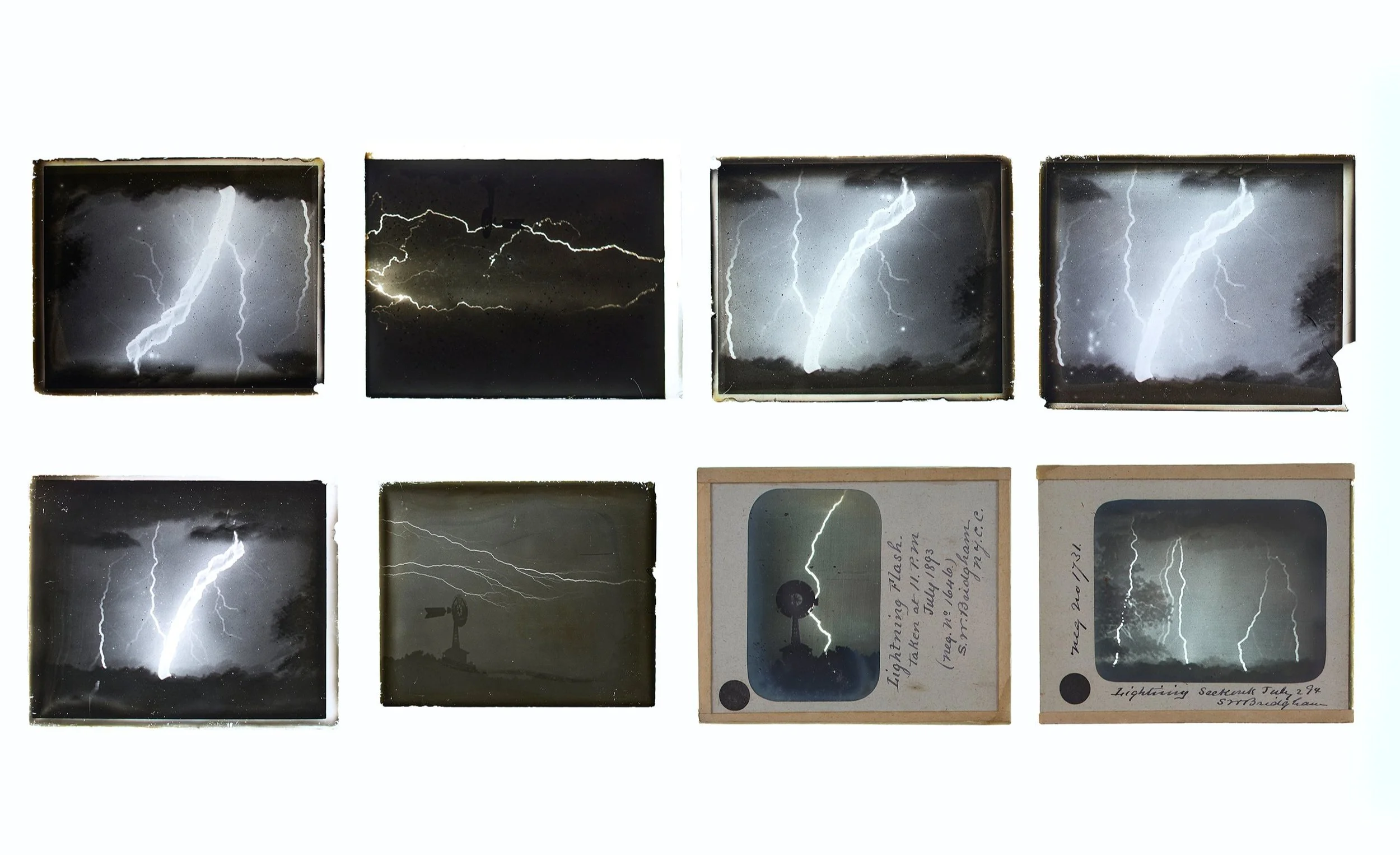LIGHTING IN A BOTTLE: EARLY PHOTOGRAPHIC INNOVATION
SUMMER FINE ART + DESIGN features a unique collection of early photographic history with some of the earliest photographs of lighting captured on film….
At the tail end of our catalog SUMMER FINE ART + DESIGN you’ll find eight photographic glass slides depicting lightning strikes. These images, while awe inspiring in their own right for their electric depiction of one of nature’s most dramatic phenomena, are most remarkable for their technical achievement. Taken practically in Vallot Auctioneers’ backyard, just east of our office in East Providence and Massachusetts, these photographs mark an early stage of photography’s development as an art form, where the bounds between scientific innovation and creative expression collided in the early days of the medium.
Written by Gwen Morris
Samuel Willard Bridgham III, the wealthy son of the first mayor of Providence, served in the New York Militia during the Civil War, and afterword became involved with the then recently founded Camera Club of New York. Throughout his life he spent his time between his New York City home, and summered on his estate in East Providence, in and around where these photographs were taken (Seekonk, Massachusetts and East Providence, Rhode Island).
While William Nicholson Jennings' 1882 photograph of lightning is often said to be the first, this collection of lightning photographs represents another early example with unique qualities. Jennings’, a noted pioneer in the field of photography, was heavily focused on scientific and informational pursuits.
Photography in the 19th century, like film in the early 20th century, was a hotbed for exploration, experimentation and innovation, blurring the lines between a purely scientific pursuit, and a magic trick. While today lighting might be captured by a high shutter speed series of images taken over a second, Bridgham’s technique was significantly limited.
It would appear Bridgham used an incredibly long, still exposure to capture the flash of the bolts. This is evident in the double image of the trees, and smearing of the central bolt in the image pictured above. This one plate could have been taken over a matter of several minutes while he waited for one or more bolts to strike, resulting in the motion blur of the surroundings, and the stark silhouetting of the landscape.
William Nicholson Jennings most noted work included the development flash photography, his lightning images, and architectural photography ¹. His work tends to the more empirical, documenting phenomena through innovations in technology.
Bridgham’s images , on the other hand, while utilizing innovative uses of long exposure times and aperture experimentation to achieve its effects, maintains an eye for composition. The placement of a windmill, contrasted against the strong crackling bolt of lightning, abstracts the composition. The picture plane flattens into silhouettes with distinct intention. Like an illustrators’ dramatized depiction he creates images that are strikingly graphic for a period in which many photographs, by necessity of the medium, were filled with an evenly lit, hazy sunlight.
Still, the only record of the work is found not in a gallery catalog, but are referred to in Popular Astronomy, Vol. 2, Issue 9, c. 1895, a scientific publication, further blurring the images’ lines as part science experiment, part artwork.
You can find these photographs as lot 178 in our SUMMER FINE ART + DESIGN catalog.
1. “An Introduction to William Nicholson Jennings.” From the Library Company of Philidephia’s archives “The William Nicholson Jennings Archive.”





